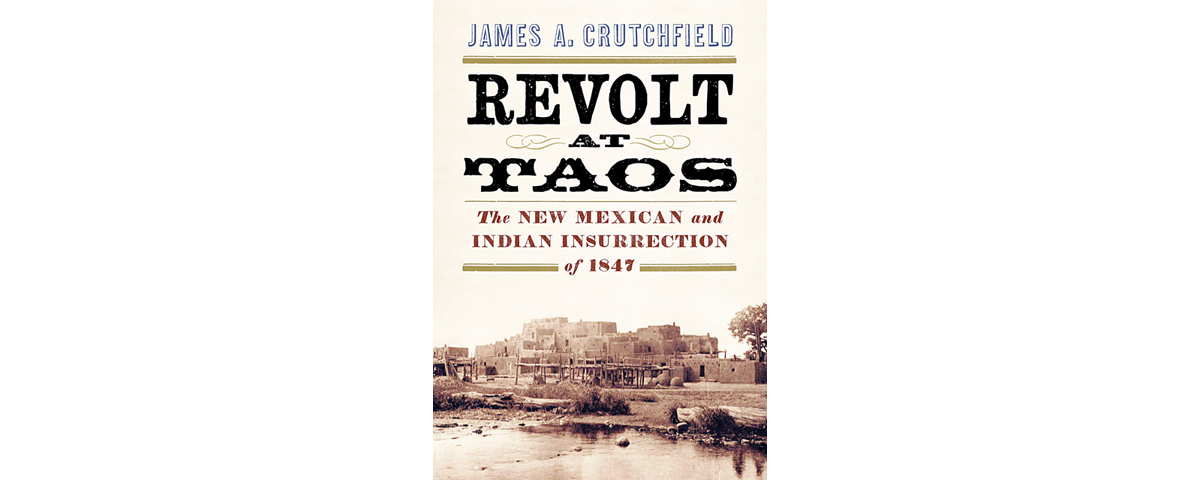Revolt at Taos: The New Mexican and Indian Insurrection of 1847, by James A. Crutchfield, Westholme Publishing, Yardley, Pa., 2015, $28
On Aug. 18, 1846, Brig. Gen. Stephen Watts Kearny watched from the Palace of the Governors as the Mexican flag was lowered and the Stars and Stripes run up the flagstaff on the plaza in Santa Fe. Kearny’s Army of the West had pulled off a bloodless occupation of New Mexico soon celebrated in newspapers nationwide. To this day many people believe that in the summer of 1846 residents of New Mexico didn’t resist because they saw the Americans as deliverers from the weak and untrustworthy Mexican government. Well, perhaps some inhabitants felt that way, but as reliable author James Crutchfield points out, others were “seething with dissatisfaction over the abrupt arrival and takeover of their homeland by the uninvited Americans and began laying the groundwork for rebellion.”
Before Kearny left Santa Fe on September 25 for the conquest of California, he had made appointments to civil offices, including Charles Bent as governor, and arrangements for an occupying force in Santa Fe. Regional tensions flared following his departure. A plot to kill all Americans and capture the Army’s artillery and Governor Bent fell through in mid-December. But up in Taos on the morning of Jan. 19, 1847, angry Taoseños and Indians from the nearby pueblo killed five men, including Bent at his house. More bloodshed followed at Turley’s Mill, Rio Colorado and Mora, and these deadly incidents led U.S. soldiers to confront the rebels at Mora in late January and Taos Pueblo on February 3. In the latter battle soldiers under Colonel Sterling Price, with artillery support, killed 154 Indians and Mexicans while losing seven men outright (though many of the 45 wounded later died). Trials and executions followed for many of the conspirators.
Crutchfield, who has written more than 40 books about U.S. history and received Western Writers of America’s Owen Wister Award for lifetime achievement, provides an even-handed account of the revolt, and his chapter “Causes and Consequences: Attempting an Interpretation” is most welcome. He does not ignore the “soldiers behaving badly” issue. “When one’s homeland is invaded by a foreign military force,” he writes, “the event is often accompanied by another adverse effect: the objectionable and sometimes criminal conduct of the occupiers toward the native population.” It’s far more complex than that, of course, and Crutchfield doesn’t pretend to have all the answers. Two things are certain, though—mistakes and misunderstandings occurred before, during and after the revolt (“a sad legacy that would not be soon forgotten,” the author writes), and the conquest of New Mexico was not really bloodless.
—Editor





